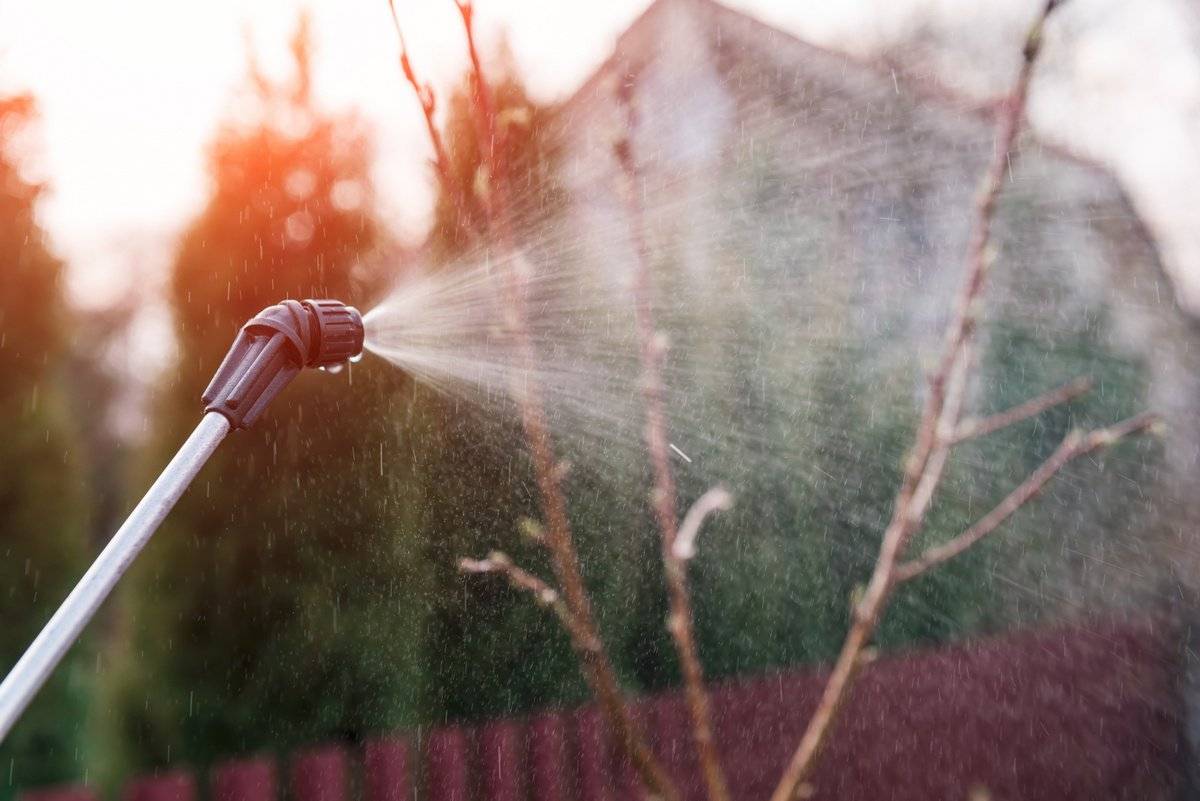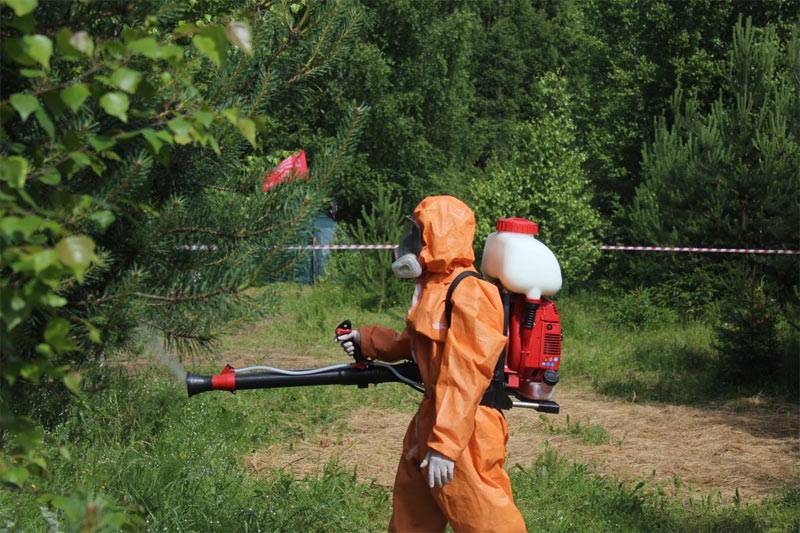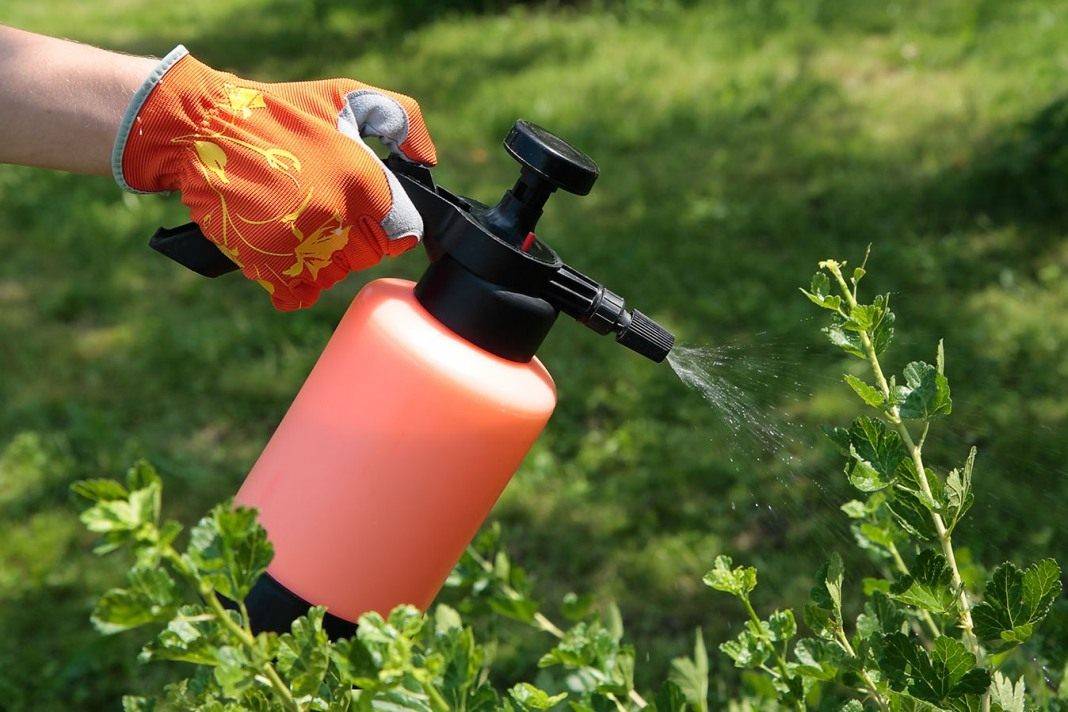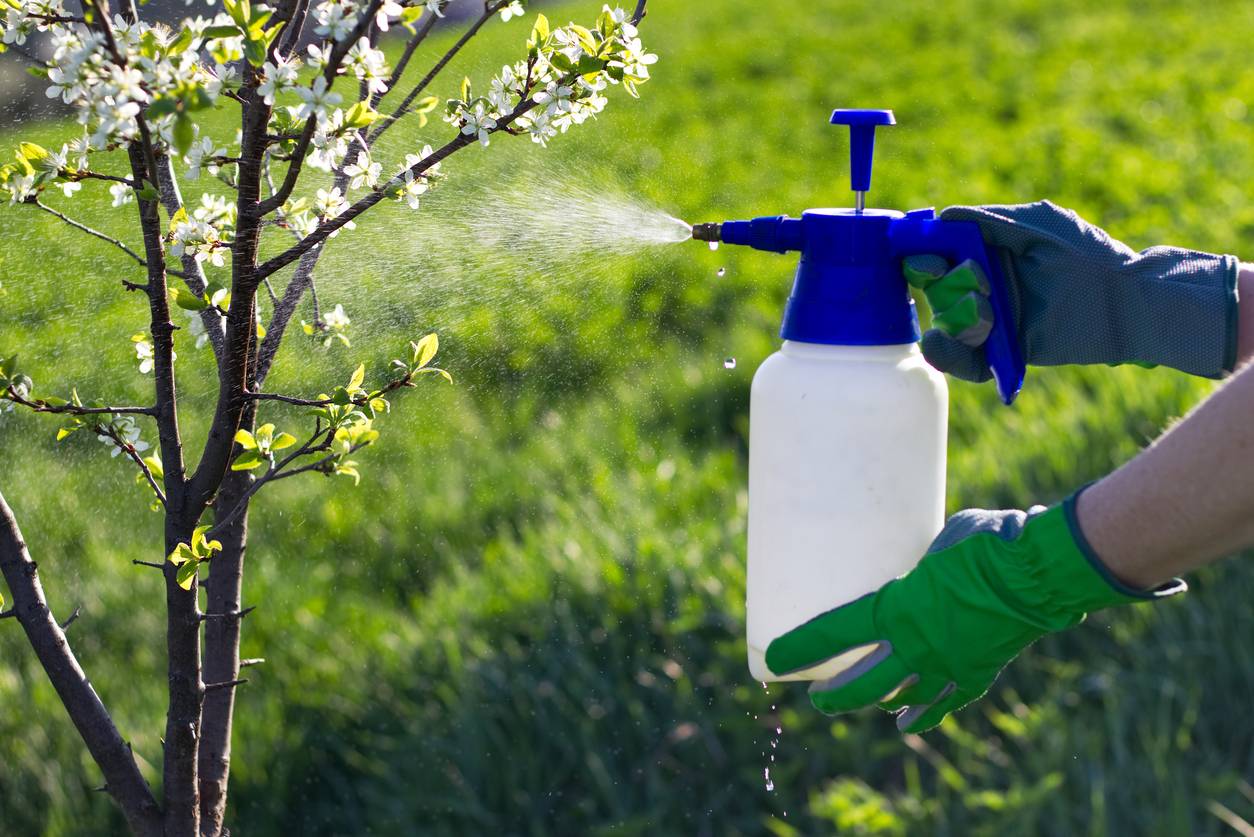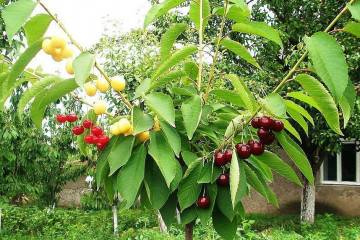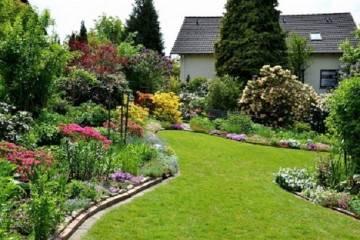Treatment of trees from pests and diseases
Content:
It is important to deal not only with the treatment of trees, but also with the prevention of their ailments, namely, treatment against pests and diseases. These events have their own characteristics, and only if they are observed, the owners will be able to get a rich harvest.
How to properly spray trees
First of all, you need to choose the right time for spraying trees. The best is the morning of a sunny day, until the air warms up. It is desirable that there is no wind at this time.
The gardener must observe safety precautions: hands are protected with rubber gloves, his face is covered with a gauze bandage or a respirator, protective glasses are in front of his eyes, and his hair is covered with a hat. All this is done so that toxic substances do not affect the body.
Spraying itself is carried out from top to bottom, starting from the top, ending with shoots and the base of the tree trunk. Part of the land near the trunk is also recommended to be processed.
Technology for processing fruit trees and shrubs in spring
A certain technology should be followed when processing trees and shrubs. It consists of the following steps:
- Removal of diseased and dead branches, as well as places of accumulation of parasites.
- Choosing the right product.
- Digging the soil at the base of the trunk.
- Preparation of the solution.
- Processing.
Timing of spraying fruit trees
To avoid the appearance of parasites, you need to know when to treat fruit trees and bushes from pests. This is done with the onset of spring, when a constant air temperature of at least 6 ° C is established.
The next treatment, if necessary, is carried out in April, when the plants are gaining growth and buds are formed.
At the end of spring, diseases and pests are again controlled, if they are found, they spray the trees and periodically repeat the procedure until the end of flowering.
How to spray trees in spring before blooming
It is very important to know how to treat trees in early spring. Before blooming, while the garden is dormant, it is the best time to spray, because the spring sap flow has not yet begun, and the plant is not able to absorb toxic and toxic chemicals. This makes it possible to choose a drug from a wide range:
- bordeaux liquid;
- copper or iron sulfate;
- urea;
- complex insecticides;
- DNOC;
- nitrafen.
Preparations for spraying fruit trees
Each type of fruit tree preparation is described below.
Biological agents
The advantage of biological preparations is that they have a milder effect on plants: they do not provoke burns, do not accumulate in the soil and fruits. This means that they can be used in processing more often than chemicals.
But with all the advantages, there are also disadvantages: such substances act more slowly than any others, so the result will not be noticeable immediately.
The most effective of all drugs of this type are the following:
- phytosporin-M acts on fungal and bacterial lesions, kills their viruses and spores;
- pentaphage fights scab, bacterial cancer and leaf spot;
- trichodermin - a remedy for fungus and rot, does not give side effects, can also be used after kidney formation;
- planriz saves from rot, rust and winged insects;
- "Fitodoctor" fights late blight, bacterial cancer and fusarium;
- nemabakt is effective in pest control, acts on both larvae and adults;
- mycosan increases the immunity of trees (replacing top dressing), protects against viral, fungal and bacterial diseases;
- guapsin fights against earwigs, aphids and fly, feeds the garden culture with nitrogen, which is in the composition;
- "Healthy Garden" saves from late blight and insects that infect the leaves of fruit trees;
- riverm is the fastest-acting of biological preparations, gives an effect within 30 minutes, fights well against fungal diseases.
Chemical methods
Chemicals are an even more effective method of controlling pests and diseases of fruit trees.
The best fungicides for fruit trees
Fungicides give a quick effect after application, which lasts for a long time.
There are two types of fungicides:
- systemic, which prevent the reproduction of viruses and bacteria;
- contact that directly fight and protect against disease.
Of all the possible compositions, several of the most effective are distinguished:
- Bordeaux liquid acts on the fungus, therefore, protects against scab, rot and rust;
- abiga-pik effectively fights against rosoria, monoliasis and curliness;
- iron vitriol acts on mosses and lichens, relieves cancer and chlorosis;
- Vectra is a fungicide that protects against scab and powdery mildew (analogous to colloidal sulfur).
The benefits of iron sulfate for trees
Iron vitriol is of great benefit to fruit crops, as it enables healthy growth and energy metabolism, helps to get rid of parasites and promotes the absorption of micro- and macroelements by the tree. The substance does not have a cumulative effect, therefore the taste of the fruit will not change.
When to spray fruit trees with iron vitriol
This composition is used only before budding on trees. It is advisable to have cloudy weather outside with sufficient humidity. But at the same time, wind and rain should be avoided so that the iron sulfate remains on the plant, having time to exert an effect.
How to dilute iron sulfate for processing trees
Iron sulfate helps with many diseases and pests. Depending on what exactly he has to fight, the required dosage is calculated:
- for whitewashing or after trimming, a solution is made with a 10% content of ferrous sulfate;
- to combat fungal diseases and insects, it is necessary to dilute half a kilogram of the substance per 10 liters of water;
- mosses and lichens on the trunks can be sprayed with a 30% solution;
- for the treatment of grapes in the spring, a weak 0.1% solution of ferrous sulfate is taken every week.
Copper sulfate solution
Copper sulfate is an aggressive and poisonous substance, so this treatment can be performed only once a year in early spring. At the same time, copper sulfate effectively copes with curliness, coccomycosis, scab and moniliasis.
Bordeaux liquid
This name hides a solution of copper sulfate and lime in equal proportions. It is customary to use this composition for the autumn processing of the garden. It should be borne in mind that copper is poisonous to humans and animals, so it is worth observing safety measures:
- do not allow the composition to get on the skin and mucous membranes, in water bodies and on animal hair;
- do not use in combination with alkaline preparations;
- copper, accumulating in the soil, becomes a herbicide;
- the use of Bordeaux liquid leads to phytotoxicity.
Urea or urea
Urea gives a good effect when used in the spring during sap flow. It will help get rid of aphids, leaf rollers, flower beetles and other pests. In autumn, the soil under the trunk is treated with urea to destroy the larvae of pests.
Specimen for preparation N 30
This tool fights pests that hide in the bark, hibernate there and lay the larvae. The drug forms a film that has a detrimental effect on parasites. Its special value is that it interacts well with other pesticides.
Folk remedies
If the disease on the plant was detected at an early stage, then you can try folk remedies:
- from spider mites will help to cope with the infusion of onion peel;
- caterpillars, aphids, powdery mildew can be removed by an infusion of garlic or a solution of ash and laundry soap;
- as a preventive measure, cultures can be treated with a salt solution (at the rate of 150 g of salt per 10 liters of water);
- liquid potassium chloride will rid the garden of aphids and caterpillars.
Any disease of fruit trees on the site is easier to cure at the initial stage. But even if they are completely healthy, every gardener in the spring should not only feed the plants, but also carry out preventive treatment against pests and diseases. This will allow you to get a rich and high-quality harvest.
